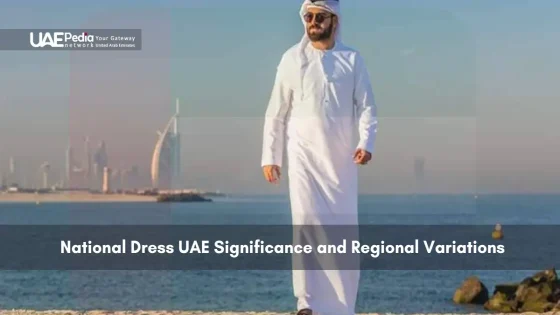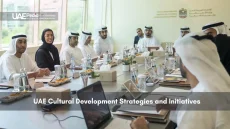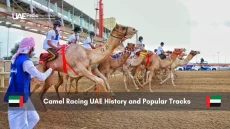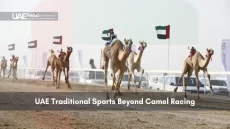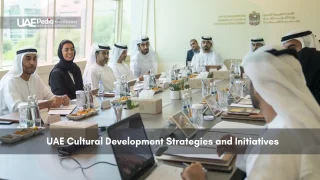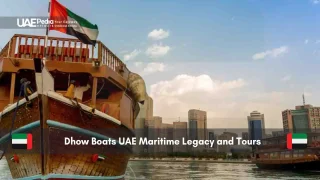Did you know the UAE’s artistic roots stretch back over a millennium, yet its galleries pulse with tomorrow’s innovations? This isn’t just about geometric patterns or ornate mosques—it’s a living story where ancient calligraphy meets augmented reality installations.
From intricate manuscript designs preserved in desert sands to sleek museum spaces in Abu Dhabi, the region’s creative heartbeat thrives on duality. Think of it as a cultural time machine: one moment you’re tracing 9th-century floral motifs, the next you’re chatting with an Emirati digital artist redefining tradition.
We’re exploring how craftsmanship passed down through generations now shares walls with bold contemporary works. You’ll discover hidden gems like the interplay of light in Sharjah’s calligraphy exhibits and Dubai’s avant-garde interpretations of arabesque patterns. Even the architecture whispers stories—every archway and courtyard tile holds meaning.
This journey isn’t just about observation. It’s an invitation to engage with a culture that treasures its past while scripting future chapters. Here’s what we’ll uncover:
- How heritage shapes modern creativity across the Middle East
- Spotlights on must-visit spaces bridging history and innovation
Exploring the Rich Legacy of Islamic Art in the UAE
Step into a gallery where 13th-century manuscripts glow beside neon-lit installations—this isn’t just history, it’s a conversation across centuries. The region’s creative DNA thrives on blending heritage with tomorrow’s visions, creating spaces where every brushstroke whispers stories.
Where Stone Meets Story
Ancient scribes left their mark in ways that still dazzle. Take the Khalili Collections: manuscripts from Morocco to China reveal intricate geometric patterns that modern architects now reinterpret. These designs didn’t just decorate pages—they mapped constellations and encoded mathematical wisdom.
“Every curve in traditional architecture holds intention—the archways aren’t just beautiful, they’re equations in stone.”
Crossroads of Inspiration
Three threads weave through the region’s creative tapestry:
| Element | Historical Roots | Modern Echoes |
|---|---|---|
| Patterns | Floral motifs in 9th-century mosques | Laser-cut metal screens in Dubai towers |
| Materials | Desert clay & palm wood | Recycled acrylic & smart glass |
| Techniques | Hand-painted calligraphy | Augmented reality poetry displays |
This fusion thrives in places like Sharjah’s Heritage Area, where wind towers share streets with digital art pop-ups. Don’t miss the forts-turned-museums—their once-defensive walls now showcase embroidered textiles that inspired last year’s fashion week collections.
What makes this legacy endure? It’s not about replicating the past. As one Emirati designer told us: “We’re not painting the same doorways—we’re building new ones, using ancestral blueprints.” From mosque minarets to gallery installations, that philosophy pulses through every creation.
Islamic art UAE: A Journey Through Time and Culture
From desert caravans carrying intricate textiles to satellites beaming pixelated patterns, creativity here defies timelines. This cultural voyage reveals how craftsmanship evolves while keeping its soul intact—like a palm tree bending with the wind but never breaking.
Evolution from Ancient Arts to Modern Masterpieces
Early artisans would’ve marveled at today’s tools. The Khalili Collection shows 14th-century metalworkers using geometry that now inspires Dubai’s 3D-printed installations. Three key shifts redefine creative expression:
| Then | Now |
|---|---|
| Handwoven textiles | AI-generated patterns |
| Clay pottery wheels | Robotic sculpting arms |
| Natural dyes | Neon laser projections |
Yet the essence remains. As contemporary artist Fatima Al-Hammadi notes: “My spray cans follow the same rhythm as my grandmother’s henna brush—both dance to heritage.”
Role in Shaping National Identity
Modern galleries have become identity workshops. At Sharjah’s biennale, you’ll find embroidery motifs transformed into augmented reality murals. These spaces don’t just display culture—they activate it.
Key institutions fuel this movement:
- Louvre Abu Dhabi’s fusion exhibits
- Dubai Design District’s maker labs
- Heritage villages hosting NFT artists
This isn’t about preserving ashes—it’s about keeping flames alive. Every innovation whispers, “We remember,” while shouting, “Watch what’s next!”
Historical Foundations: Manuscripts, Calligraphy, and Mosque Architecture
Imagine holding a 12th-century manuscript where gold leaf outshines the desert sun—each stroke a bridge between earth and the divine. The Khalili Collection reveals this magic, with works spanning 1,200 years that still make modern designers gasp. From Quranic scripts in cobalt ink to architectural blueprints etched on gazelle skin, these objects whisper secrets of patience and precision.
When Ink Becomes Legacy
Scribes across the Middle East treated calligraphy as sacred geometry. A single page might take months, blending crushed lapis lazuli with egg whites for celestial blues. Tools mattered as much as talent:
| Element | Historical Practice | Modern Influence |
|---|---|---|
| Pens | Reed stalks sharpened at dawn | 3D-printed nibs in Dubai studios |
| Ink | Saffron-infused walnut shells | Eco-friendly plant dyes |
| Guidelines | Hidden grid systems | Augmented reality overlays |
“The best calligraphers could write a single letter 100 ways—each version carrying different emotion, like musical notes.”
Stone Poetry in Three Dimensions
Historic mosques turned mathematics into worship spaces. Take Abu Dhabi’s Sheikh Zayed Grand Mosque: its 82 domes echo 14th-century Persian designs, while floral mosaics contain 2 million pieces. Every arch follows precise ratios believed to mirror cosmic harmony.
You’ll find this history alive in exhibitions showcasing carved wooden minbars alongside contemporary light installations. The range astonishes—one display pairs 9th-century astrolabes with AI-generated star maps, proving innovation isn’t new here.
Contemporary Expressions: Modern Masterpieces and Innovative Exhibitions
In the heart of the Middle East, creators are rewriting cultural narratives with tech-infused works that spark global conversations. Galleries pulse with experimental energy—where augmented reality meets handwoven textiles and 3D-printed sculptures whisper ancient poetry.
When Tradition Gets a Tech Upgrade
Emerging artists like Alia Al-Mansoori stitch heritage into futuristic forms. Her mixed-media installations at Bait Al Serkal layer laser-cut metal with palm-frond weaving patterns—a dialogue between Bedouin craft and aerospace engineering. Recent exhibitions reveal three creative shifts:
| Traditional Element | Modern Transformation |
|---|---|
| Calligraphy | Projection-mapped poetry on shifting sands |
| Geometric patterns | AI-generated designs reacting to viewer movements |
| Natural dyes | Glow-in-the-dark pigments charged by solar energy |
“We’re not abandoning our roots—we’re giving them wings through technology.”
Museums Become Playgrounds
Walk through Sharjah’s light-based installations where your shadow activates centuries-old folktales. Dubai’s newest exhibition space lets visitors step inside digitized manuscript pages, swirling with interactive Arabic script. These experiences don’t just display culture—they let you live it.
From VR journeys through historic trade routes to soundscapes blending oud melodies with electronic beats, the region’s creative spirit invites everyone to participate. As one curator told us: “Here, art isn’t a spectator sport—it’s a shared language reshaping how the world sees our stories.”
The Global Stage: Exhibitions and Biennales Shaping Islamic Art
Step into Sharjah Biennale 15’s main pavilion, where whispers of ancient poetry collide with drone-light choreography. These events don’t just display creative works—they ignite global conversations, turning gallery floors into diplomatic stages.
Bridging Continents Through Curated Experiences
At SB15’s 2023 edition, visitors traced digital calligraphy across augmented reality screens while handling 3D-printed replicas of 14th-century objects. One attendee described it as “time travel with a hashtag—you’re decoding patterns older than nations while live-tweeting revelations.”
Three global exhibitions redefine cultural exchange:
- Venice Biennale’s Middle East Pavilion: Sandstone sculptures meet AI-generated soundscapes
- Paris’ Institut du Monde Arabe: Photo essays juxtapose Bedouin portraits with satellite cityscapes
- Dubai’s Xposure Festival: Immersive video installations transform desert myths into sensory journeys
Cameras as Cultural Ambassadors
Photographer Ammar Al-Attar’s SB15 series captures abandoned Emirati homes reborn as art spaces. His lens frames crumbling walls beside holographic projections—a visual metaphor for preservation through innovation.
“These exhibitions aren’t about where art comes from. They’re about where it’s going—and who gets to shape that story.”
Nightly projection mapping at Al Majaz Amphitheatre turns heritage sites into living canvases. Visitors walk through light-painted trade routes while sensors translate their movements into digital patterns. It’s history remixed for the TikTok generation—educational, shareable, unforgettable.
Institutional Contributions: Museums and Curatorial Excellence
What if museums could be time machines and innovation labs at once? Across the Middle East, cultural spaces do both—preserving fragile manuscripts while incubating tomorrow’s creative revolutions. These institutions don’t just display objects; they spark conversations between centuries.
Archives That Rewrite History
The Khalili Collection’s 28,000-piece survey reveals hidden connections across eras. Their private collections study partnered with Oxford researchers to decode 9th-century trade routes through ceramic patterns. Three ways they’ve shifted perspectives:
| Traditional Approach | Modern Curation | Impact |
|---|---|---|
| Static displays | Interactive 3D scans | Global digital access |
| Solo exhibitions | Cross-cultural dialogues | New scholarly networks |
| Local audiences | VR school programs | Next-gen engagement |
“We’re not just keepers of history—we’re matchmakers between past masters and future innovators.”
Where Guardians Meet Pioneers
Abu Dhabi’s cultural district exemplifies this dual mission. The Zayed National Museum conserves rare textiles while hosting residencies for artists reimagining those very techniques. Key collaborations driving change:
- Emirati-Japanese workshops fusing washi paper with palm-leaf weaving
- AI projects analyzing 14th-century scripts to generate new typefaces
- Climate-controlled galleries protecting dyes made from extinct plants
From publishing groundbreaking catalogues to staging augmented reality tours, these spaces prove heritage thrives when paired with fresh eyes. As one conservator told us: “Our work bridges what was treasured and what’s possible—always with respect, never with fear.”
Bridging Traditional Heritage with Global Contemporary Movements
What happens when a 15th-century Persian pattern becomes code for a Tokyo digital artist? The answer unfolds in Dubai’s Alserkal Avenue, where cross-continental creativity sparks daily. Galleries here feel like global campfires—artists from Seoul to Marrakech swapping techniques while algorithms reinterpret ancestral designs.
Cultural Exchange Between the Middle East and the World
Recent collaborations reveal surprising synergies. Emirati weavers now partner with Finnish textile engineers, merging palm-frond braiding with sustainable nylon threads. In Berlin, a sound artist transforms Quranic recitations into pulsating light installations using motion sensors. Three key fusion points emerge:
| Traditional Element | Global Fusion | Location |
|---|---|---|
| Geometric patterns | 3D-printed pavilions reacting to weather | Dubai Design Week |
| Textile weaving | AI-loomed fabrics changing color | Sharjah Biennale |
| Calligraphy | Projection-mapped poetry on skyscrapers | Seoul Media Art Festival |
“Our workshops have no borders—a Jordanian potter might teach a Korean ceramist ancient glazing methods, then learn hologram techniques in return.”
These exchanges birth hybrid works that defy categorization. Take the “Sand Script” installation: Moroccan sand artists and Emirati programmers created a floor projection where viewers’ footsteps generate temporary Arabic verses. It’s heritage as a living language—spoken through movement and erased by wind.
From New York galleries showcasing Omani silverwork reimagined as wearable tech to Milan design fairs featuring Emirati form meets Italian marble, the ground between tradition and innovation keeps shifting. As one visitor noted: “It’s not about East or West anymore—it’s about shared vocabulary written in light, stone, and code.”
Artistic Narratives: Photography, Sculpture, and Mixed Media Interpretations
What if a single photograph could hold centuries of stories? Across the Middle East, creators wield cameras and clay to map emotional landscapes—where personal journeys intersect with cultural memory. This isn’t just documentation; it’s alchemy transforming fleeting moments into timeless dialogues.
Visual Storytelling and the Human Experience
At Sharjah Biennale 15, Latifa Al Falasi’s photo series captures hands bearing fading henna patterns—each image a love letter to impermanent beauty. Nearby, mixed media installations blend desert sand with projected family archives, creating shifting landscapes of memory.
Three projects redefine narrative traditions:
- AI-generated sculptures that morph based on viewers’ heart rates
- Photo collages merging 1970s market scenes with drone footage
- Sound-reactive clay tablets etched with disappearing ink poetry
“Our best works aren’t made—they’re discovered through layers of lived experience.”
Galleries now function as memory laboratories. The “Echoes in Transition” exhibition uses light-sensitive paper to create evolving portraits—images fade unless viewers breathe on them, mirroring how traditions survive through active participation.
| Medium | Historical Role | Contemporary Twist |
|---|---|---|
| Photography | Documenting daily life | Interactive AR family trees |
| Sculpture | Commemorating leaders | Shape-shifting community monuments |
| Textiles | Preserving patterns | Solar-activated storytelling tapestries |
From Dubai’s Alserkal Avenue to global biennales, these works invite us to see culture as a verb—not frozen in time, but continually rewritten through shared creative acts.
Final Reflections on the Enduring Spirit of Islamic Art in the UAE
As the sun sets over Abu Dhabi’s dunes, casting shadows on ancient patterns etched in stone and glass, we’re reminded: creativity here thrives through reinvention. From 9th-century manuscripts to AI-powered installations, the journey across time reveals a culture that treasures its roots while reaching for new horizons.
This spirit pulses through spaces like Louvre Abu Dhabi, where autumn’s Cartier exhibition will bridge jewelry craftsmanship with digital storytelling. It’s not just about preserving the past—it’s about sparking dialogues where heritage fuels tomorrow’s innovations.
Want to dive deeper? Start by exploring Abu Dhabi’s spiritual and cultural, where historic forts neighbor interactive galleries. Share your discoveries, debate reinterpretations, and let each visit reshape your understanding of what art does in our world.
The true magic lies in this duality: museums guard fragile histories while incubating bold ideas. Whether you’re marveling at calligraphy robots or Bedouin-inspired VR journeys, every experience whispers, “Remember where we’ve been—and imagine where we’ll go.”
Head to Sharjah’s Museum of Islamic Civilization or Abu Dhabi’s Sheikh Zayed Grand Mosque. Both showcase intricate calligraphy, geometric designs, and artifacts spanning centuries—like illuminated Qurans and celestial astrolabes that whisper tales of trade routes and scholarly traditions.
Local creators riff on heritage motifs through bold experiments—think digital projections reimagining arabesque patterns or sculptures merging falaj irrigation systems with 3D-printed forms. Galleries like Alserkal Avenue host exhibitions where henna-inspired body art meets VR storytelling.
Institutions like Louvre Abu Dhabi and the upcoming Zayed National Museum act as bridges—curating rare manuscripts alongside contemporary installations. They partner with global collections (hello, Khalili!) to spotlight how Bedouin weaving or mosque mosaics influenced global design movements.
Absolutely! Don’t miss the Sharjah Biennale, where artists from Marrakech to Manila reinterpret cultural narratives. Dubai Design Week also features pop-ups exploring everything from Sufi poetry in graffiti to sustainable architecture inspired by wind towers.
Yes—Al Ain’s Qasr Al Muwaiji now offers augmented reality tours revealing hidden details in ancient fort carvings. Meanwhile, teamLab’s immersive light installations at Expo City Dubai transform Arabic script into dancing holograms you can literally walk through.
Grants like the Salama bint Hamdan Emerging Artists Fellowship nurture talents blending samar tree dyes with bio-art or recording oral histories through soundscapes. Dubai’s Jameel Arts Centre also hosts residencies encouraging cross-cultural collabs—say, Emirati potters + Japanese ceramicists.

